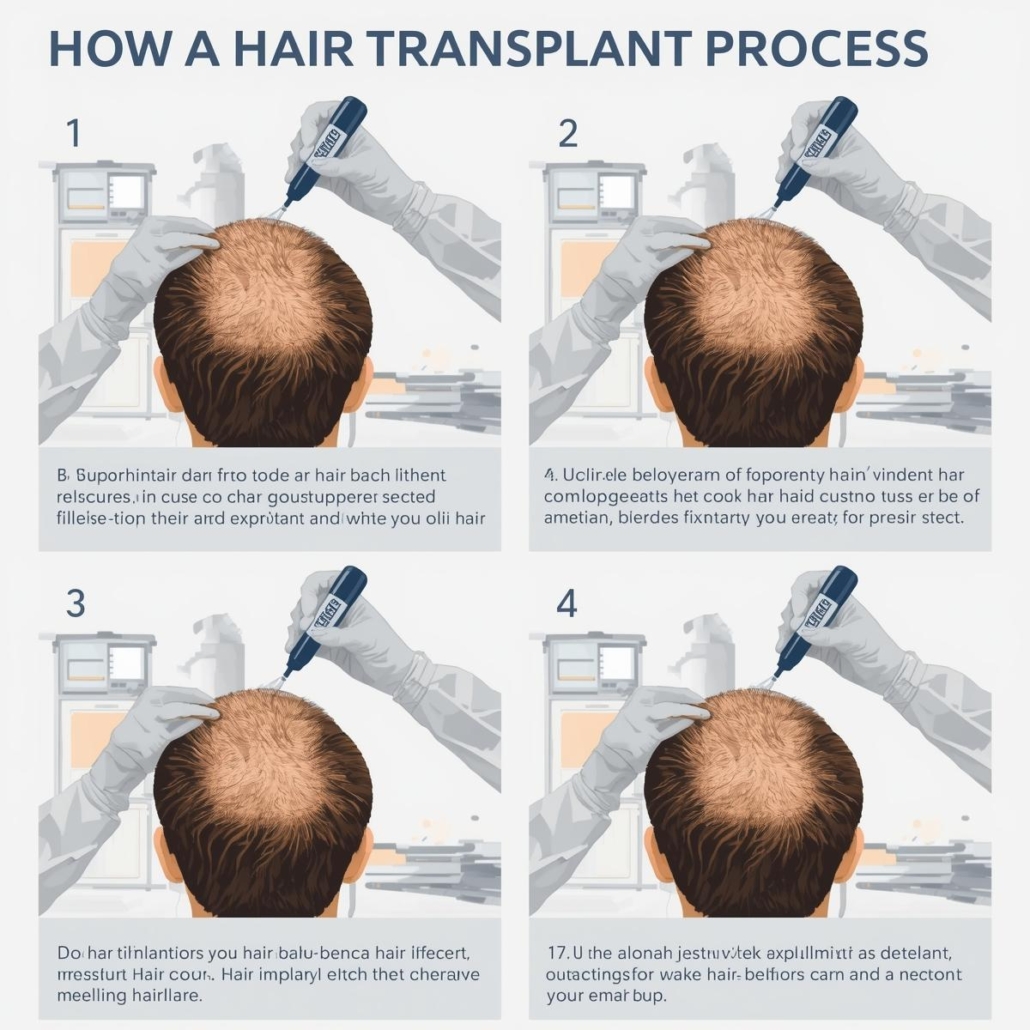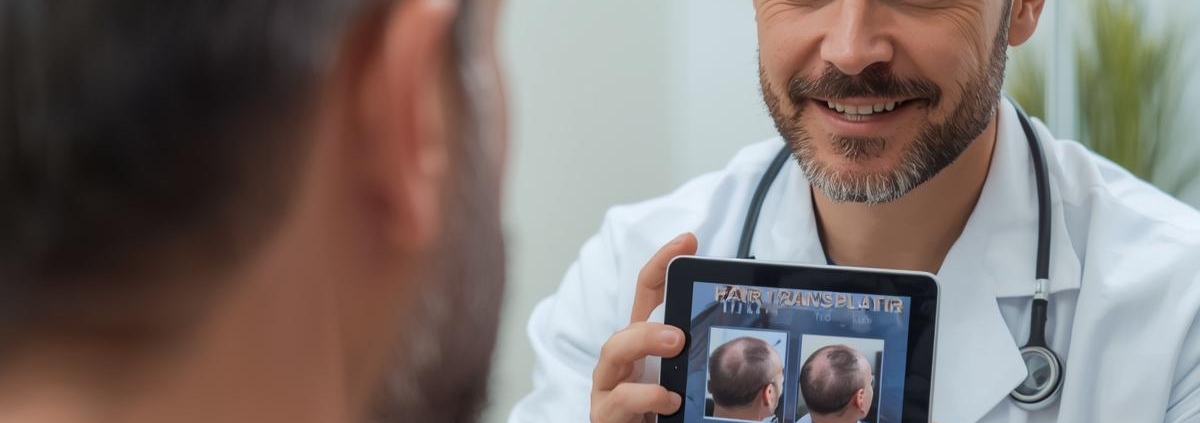Hairline Receding After 40? Hair Transplant Is Your Permanent Solution
You wake up one day, look in the mirror, and notice your hairline isn’t where it used to be.
It’s not your imagination, it’s nature at work.
For many men and women in their 40s, a receding hairline is one of the most common (and frustrating) signs of aging. According to the American Hair Loss Association, nearly two out of three men experience noticeable hair loss by 35, and by age 50, that number rises to 85%. Meanwhile, 40% of women experience visible thinning after 40, often due to hormonal shifts and stress.
If you’ve tried serums, supplements, or endless home remedies with no luck, it’s time to consider a solution that actually lasts: a hair transplant.
This is a full guide on why your hairline is receding, how modern methods like PRP, FUE, and FUT can restore it naturally, and how to find the best hair transplant near me for results that last a lifetime.
Why Hairlines Get Thinner After 40

Your hair doesn’t just fall out all at once; it happens slowly over time because of a number of things working together.
This is what really happens:
- Changes in hormones (DHT): Dihydrotestosterone (DHT) is a hormone that makes hair follicles smaller. These follicles stop making hair that can be seen over time.
- Genetics: If baldness runs in your family, your DNA determines how soon and how fast it appears.
- Lifestyle & Stress: Long working hours, poor sleep, and emotional stress raise cortisol levels, disturbing your hair growth cycle.
- Nutritional Deficiency: If you don’t get enough zinc, iron, or biotin, your follicles will be weaker, especially if you skip meals that are balanced.
- Weather and Pollution: Harsh sunlight, hard water, and dust exposure are all things that happen a lot in Pakistan that can hurt the scalp and stop new growth.
These things all cause hair to thin at the temples, crown, and forehead. The good news? Once you know the cause, you can fix it.
Why Temporary Fixes Don’t Work
Hair oils, vitamins, and even PRP injections alone might slow down hair loss, but they don’t fix the root problem.
When follicles die due to DHT or genetics, no product can bring them back. It’s like watering a plant that has no roots and nothing will grow.
That’s why dermatologists recommend hair transplant procedures as the only permanent way to restore real, growing hair. Unlike topical solutions, a transplant moves living follicles from a healthy part of your scalp (usually the back) to the thinning areas. Once implanted, they keep growing naturally for life.
How a Hair Transplant Works

Modern hair transplants are nothing like they were 15 years ago. Today’s methods are minimally invasive, pain-free, and so natural that no one can tell you’ve had one.
Depending on how bad your hair loss is and how healthy your scalp is, doctors now use a combination of three advanced methods: PRP, FUE, and FUT.
a. PRP, which stands for Platelet-Rich Plasma Therapy
PRP is a non-surgical treatment that uses the healing power of your own blood to make your hair stronger and help new hair grow.
Doctors take a small amount of blood, separate the plasma that has a lot of growth factors, and then put it into areas that are getting thinner.
Benefits:
- Stimulates weak follicles to regrow.
- Improves scalp circulation.
- Helps hair transplants heal faster.
- Reduces hair loss after surgery.
People usually use PRP along with FUE or FUT to get better results and heal faster.
b. FUE, that is Follicular Unit Extraction
FUE is one of the most sophisticated and popular hair transplant procedure in Pakistan.
- Micro punches are used to remove each follicle one at a time.
- Minimal scarring and faster healing.
- Ideal for smaller areas or short hairstyles.
Because each graft is placed in the same angle and direction as your natural hair, the results look completely natural even up close.
c. FUT (Follicular Unit Transplantation)
People who need a lot of coverage prefer FUT, which is also called the “strip method.”
- A thin strip of skin is taken off the back of the head.
- Under a microscope, follicles are separated and moved to areas where hair is thinning.
- Lets you put in more grafts in one session.
FUT takes a little longer to heal, but it gives you great density and results that last.
Both FUE and FUT use hair from the “safe zone,” the back and sides of your scalp, where follicles are naturally resistant to DHT. Once moved, these grafts continue to grow normally for life.
Why It’s a Permanent Solution
This isn’t a cosmetic illusion; it’s a biological fix.
The transplanted follicles are genetically resistant to the hormone that causes baldness. That’s why once moved, they keep growing for decades.
A 2023 study published in the Journal of Cutaneous and Aesthetic Surgery found that over 92% of transplanted grafts remain healthy and active long-term when using advanced FUE methods.
Unlike medications that stop working once you quit them, a hair transplant offers lifelong results.
What Recovery Looks Like
Recovery is quick and straightforward, no hospital stay or long downtime needed.
| Days 1–3 | Mild redness or swelling around grafts |
| Week 1 | Scabs start falling off naturally |
| Month 1 | Temporary “shedding” phase begins (normal) |
| Months 3–4 | New baby hair starts appearing |
| Months 9–12 | Full, natural density becomes visible |
How to Choose the Right Clinic

When you search for a hair transplant near me, you’ll find countless clinics online, but choosing the right one matters most.
Things to think about before making a choice:
- Surgeons with a licence: Check the doctor’s credentials and experience.
- Real Results: Look for real pictures of what happened before and after.
- Transparent Consultation: A good clinic will first look at your scalp and set realistic goals.
- Technology: Clinics that use robots or microscopes to help with extraction are more accurate.
- Aftercare Plans: A professional clinic will have follow-up sessions and PRP support.
Stay away from clinics that promise “instant results” or offer deals that seem too good to be true. Good care leads to long-lasting, natural results.
Cost of Hair Transplant in Pakistan (2025 Update)
Pakistan has some of the best transplant services in the world, and they cost a lot less than in other countries.
| City | Avg. Cost per Graft ( PKR) | Estimated Total (1500-4000 grafts) |
| Lahore | 60–100 | 90,000–350,000 |
| Karachi | 70–120 | 100,000–400,000 |
| Islamabad | 80–130 | 120,000–450,000 |
That’s almost 70% less expensive than similar procedures in Dubai or the U.S., but the quality of care and standards are still high.
Common Myths About Hair Transplants
Let’s clear up a few common misconceptions:
1- “It looks fake.”
Modern FUE and FUT are designed to blend perfectly with your natural growth.
2- “It’s painful.”
The procedure uses local anesthesia; most patients describe it as mild pressure.
3- “It’s only for men.”
Women also get PRP and smaller transplants for thinning areas or hairline correction.
4- “It needs constant maintenance.”
Once the transplanted hair grows, you treat it just like natural hair.
Real Results: Confidence Restored
Thousands of people in Pakistan have shared their transformation stories.
After his FUE session, a 45-year-old engineer from Lahore said, “It’s not just about hair; it’s about confidence.”I feel like myself again and look younger.
These stories show that getting your hair back isn’t just about looking good; it’s also about feeling good and having a better life.
How to stay healthy to protect your new hair

It’s important to keep your scalp healthy, even though transplanted hair will last forever:
- Fish, eggs, and nuts are all high in protein and good for you.
- Take biotin or zinc supplements that your doctor says are okay.
- Both smoking and drinking alcohol slow down recovery.
- Use a shampoo that is sulfate-free and gentle.
- Get enough sleep, do yoga, or go for a walk every day to help with stress.
If you make a few habits a part of your daily life, you can keep your hair healthy for life.
The Takeaway
Turning 40 doesn’t mean accepting a thinning hairline.
You can safely, permanently, and confidently get your natural hair back with advanced procedures like PRP, FUE, and FUT.
It’s not about trying to look younger; it’s about finding yourself again.
If you’ve been looking online for a hair transplant near me, keep in mind that the answer is closer than you think.
You can get your full, natural hairline back and the confidence that comes with it with the help of the right specialist.
Because the best version of you is sometimes only one choice away.



Leave a Reply
Want to join the discussion?Feel free to contribute!